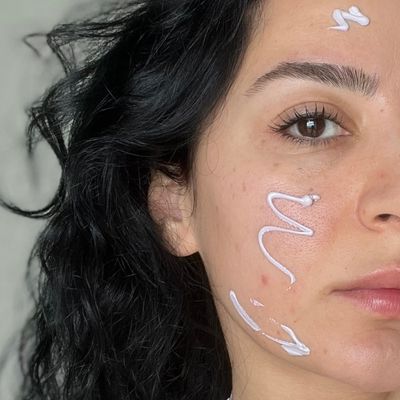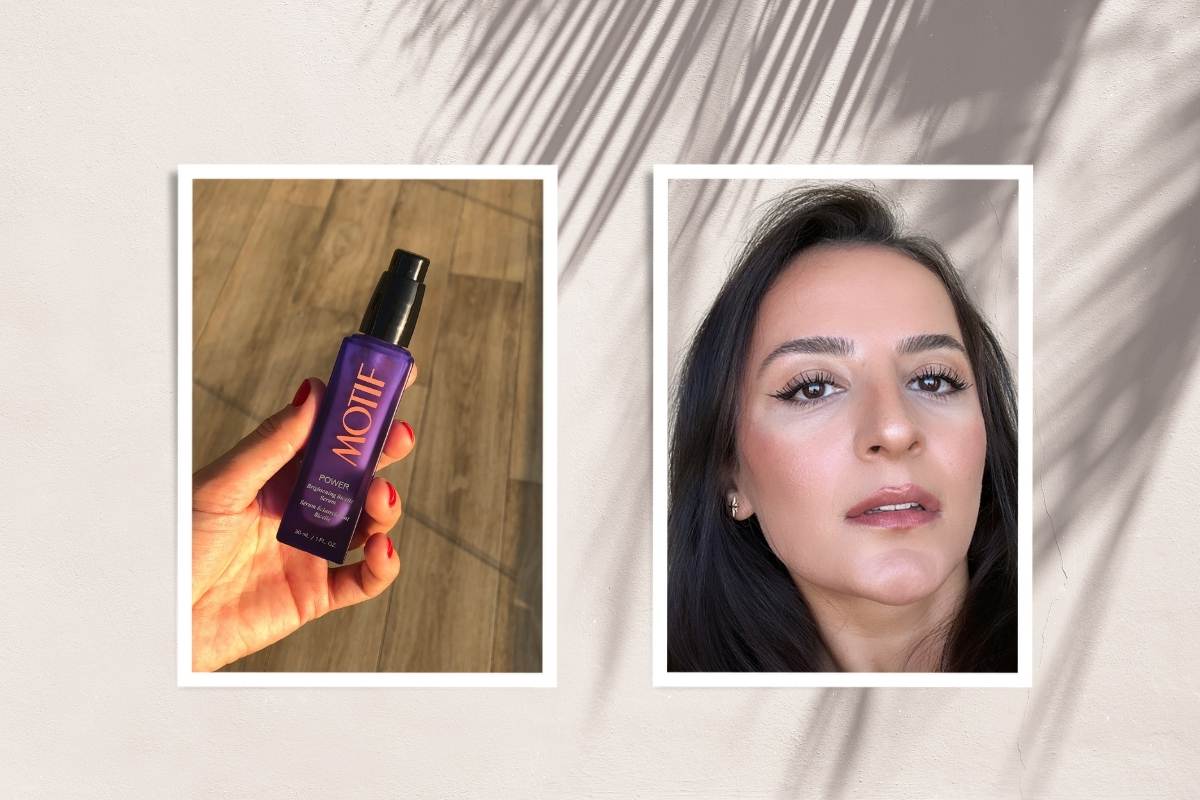Well, color me corrected! Turns out, those 6 mysterious shades just sitting there gathering dust inside an 8-shade face palette do have a purpose! And here I was worrying that they would make my two worn-out favorites look overworked.
Color correcting sounds niche and not even remotely practical for everyday makeup. But if you’ve ever felt like no amount of full-coverage concealer or foundation can hide your redness, dark circles, or uneven skin tone, this is for you!
Color correcting does the heavy lifting by canceling out unwanted colors. This can seriously cut down on your foundation and concealer needs! That means a balanced skin tone that doesn’t have to look cakey with layers of foundation!
Here’s everything you need to know about it and how to master it!
Do You Even Need Color Correcting?
Before diving in, I want to save you some time and quickly mention that some people think color correcting is best left to makeup artists or people with a lot of time on their hands. And I agree. Mostly. Color correcting is not necessary. But it can be transformative in the right cases.
Consider color correcting if your foundation looks grey or dull on dark spots, or your redness still shows through your base makeup, or your under-eye concealer looks ashy or just tired.
Skip color correcting if you don’t have major discolorations, or aren’t bothered by them, or your concealer/foundation already works well enough to give you an even skin tone.
What Is Color Correcting?
Color correcting is a makeup technique that uses the principle of complementary colors to neutralize unwanted tones on your skin. Just a quick reminder from art class: colors opposite each other cancel each other out.
If you’re wondering what color, on earth, your face would have, that would require a rainbow palette for correction, hello? Acne marks? Brown spots?
By applying a thin layer of the correct complementary color before foundation, you’re essentially canceling out the tone you want to hide. This reduces how much coverage you need, and sometimes even renders your foundation redundant!

This is the wheel that should pop into mind when in doubt. The theory is that the colors sitting on the exact opposite of each other cancel each other out! And this goes both ways. Example: purple cancels yellow, and yellow cancels purple. The same applies to all colors.
Which Colors Correct What?
Well, since our face doesn’t look like one colorful paint palette, here’s how that wheel translates to actual, real-life discolorations on the skin. While some of these colors are more commonly used than others, here is what you can expect from color-correcting makeup.

This is roughly what colors correct which type of discolorations on the skin. Note that discolorations look different on different skin tones. A dark circle may look brown on deep skin and blue on light skin. So there’s not exactly a cookie-cutter approach here, and you might need to do some trial and error.
Green Color Corrector
Green should be your go-to if your skin is acting like a tomato. Think rosacea, angry zits, or random splotches from who-knows-what. Green is also super helpful for neutralizing redness around the nose. If redness is your main concern, I have a full guide on how to color correct redness that walks you through it step-by-step.
Peach/Orange Color Corrector
These colors are used for canceling out dark circles on different skin tones. For example, peach works better on light to medium skin tones, while orange works great for deep skin tones. This isn’t far-fetched! I once applied a concealer shade way darker than my skin tone, and accidentally color-corrected my dark shadows!
Pink/Salmon Color Corrector
These shades cancel out purple under-eye circles on lighter skin tones. Think blue-ish shades visible on very pale skin. The same shade can also be used to brighten, reduce dullness, and give the face a fresher vibe.
Yellow Color Corrector
Yellow neutralizes purple or brownish under-eye circles, especially on warm, olive skin tones. It also helps with that veiny look around the eyes. It’s the most common color found in a MAC makeup artist’s concealing palette!
Lavender/Purple Color Corrector
After green, purple is my favorite color corrector, and for good reason! It brightens dull skin, neutralizes sallowness, and works like magic on skin like mine: 30+, always tired, and sleepy!
Blue Color Corrector
OK, this is something I actually learned while I was researching for this article. Though blue doesn’t sound like it should be a common color in makeup to fix discolorations, it actually makes so much sense! Blue has a neutralizing effect and makes warm tones look cooler. That’s why it’s used as a functional pigment to turn an orange (oxidized) foundation into a neutral one, or turn a warm shade into a neutral one.
Types of Color Correcting Products
Color correcting comes in several forms. You can choose depending on your makeup style, skin type, and how much correction you need.
Concealers
Concealers are the most common color-correcting products. They come in creamy, liquid, or stick formulas and work well for spot-correcting. They’re easy to use, versatile, and great for layering and building coverage as needed. These are the best if you want precision and something beginner-friendly.
Primers
Color correcting primers with a tint (like green or peach) are great if you want an all-over correction and longer-lasting makeup. Contrary to concealers, these are usually applied all over or on larger areas. They’re better for mild redness or uneven skin tone, but this means they’re not enough for serious redness or dark circles. As they’re primers, they smooth skin texture, prep skin for foundation, and extend makeup wear.
Color Correcting Palettes
Palettes come in a selection of colors for different issues, sometimes even a mix of correctors and concealers. They can be a better choice if you have several color correcting needs. Multiple shades allow you to experiment and multitask, which is especially helpful for the makeup-savvy.
Powders
Powders with color-correcting pigments exist, but are not as popular. They’re not suitable for use before makeup, making them impractical when your aim is to go easy on your base. These days, colored powders are mostly common as setting powders, and not primarily for color correction. Think of the yellow banana powder craze we used to ‘bake’ our under-eyes with. Or more recently, Huda came up with a purple setting powder, which, all thanks to its color, brightens your eyes while setting your concealer in place.
Color Correcting Drops
I’m including these here because I believe we’ll see more of these products in the near future. Though there aren’t many, there are skincare-infused color correctors that aim to reduce discolorations while helping with common concerns like redness and sensitivity. Think of them as skincare/makeup hybrids. Most of them have a milky, serum-like consistency.
How to Color Correct
Whether you’re trying to color correct under-eyes or cheeks, here are the basics of application.
1. Prep Your Skin
A good skin prep goes a long way. Cleanse, moisturize, and apply sunscreen. Move on to color correction after you’ve done your skincare routine!
2. Apply Your Color Corrector Sparingly
Dab small amounts only on problem areas, or apply a very thin layer all over the face. Using too much will make it impossible to blend. And using too little won’t give you the coverage you need for color correction.
3. Blend Gently and Slowly
Use your fingers, a brush, or a damp makeup sponge to blend the color corrector seamlessly into your skin. Take your time so you don’t over-blend and wipe away the product. Avoid rubbing aggressively; that just moves the product around and defeats the purpose.
4. Let It Settle
Give it a few minutes and let your color corrector set before adding foundation or concealer. This prevents it from moving around and mixing into your base makeup.
5. Apply Base Foundation/Concealer
Depending on where you’ve color corrected, redness on the cheeks or darkness under the eyes, you can now move on to foundation and concealer. Go over the color-corrected areas and apply your base makeup. Remember to apply lightly and in thin layers because your skin is neutralized, and you don’t need to pile on product.
6. Build Coverage If Needed
The color correction should do most of the heavy lifting. But if there are still visible discolorations, you can lightly spot-conceal problem areas with a regular concealer matching your skin tone. Build the coverage slowly to avoid a cakey look.
Color Correcting Mistakes to Avoid
Don’t expect magic from color-correcting makeup. But know that small mistakes can make your final look annoyingly unsatisfying. Here are some of the most common mistakes people, including yours truly, make when trying to color correct.
- Using too much product: Your skin will look green, orange, or patchy instead of neutral. Start small and build if needed.
- Choosing the wrong color for your skin tone: Peach looks great on medium skin but may be too harsh on very fair skin, causing an orange tint.
- Skipping skincare: Color correcting over dry or irritated skin can emphasize texture and flakes.
- Blending too hard: Over-blending removes the correction, making it useless. Blend just enough to soften the edges.
- Applying foundation too soon: Let color correctors set to prevent them from moving or mixing with foundation. Otherwise, the coverage will be uneven.
Everyday Color Correcting for Normal People
So what happens if you’re not into full-on color correcting and not interested in experimenting or dabbing purple and green all over? There are still some benefits to color correcting without branching out too much.
Here are some easy ways to incorporate color correcting into your daily makeup routine, and you don’t need to go out of your way to buy a product!
- Apply green color correcting primer over your moisturizer to subtly even out your skin tone, and you can skip foundation! This is perfect if you have all-over redness or rosacea but don’t want to precision-correct every red patch. I have rosacea, and this is literally my go-to method.
- Not all peach-colored concealers are labeled as correctors, but they act like one. These are great under the eyes or over dark spots, and you can often skip layering another concealer on top.
- Alternatively, you can mix a small amount of peach color corrector with your under-eye concealer to banish tired-looking eyes!
- Consider using a purple-colored primer or CC cream, such as Erborian CC Dull Correct, to revive lackluster skin without needing a drop of foundation.
- Speaking of purple, if your base makeup looks dull, use a blush with shades of purple to brighten your face and make it look more youthful.
- The red lipstick trend that took over TikTok was actually color-correcting makeup! Red, much like peach and orange, cancels out blueish dark circles. Don’t buy a color corrector for dark circles. Just swipe your lipstick there and then apply concealer.
Here’s one way I like to color-correct using Erborian CC Dull Correct, which is lavender/purple.


I don’t like to try 3 different colors on my face when I’m only going for a natural, everyday makeup look. So instead of spot-correcting, I’m using a single color all over my face to neutralize my most annoying concern: lackluster skin. As you can see, the purple color-corrector, though it doesn’t have a lot of coverage as a product, gives me an even skin tone, making me look like I’m wearing foundation. I only have a dab of concealer under my eyes, but my face is visibly brighter.
So this is how color correcting works. You don’t need to master color theory to look good. Know that for many, good skincare and a regular drugstore concealer are enough to get a healthy, even base. But if you’ve tried everything and still feel your base looks off, this is worth trying!



